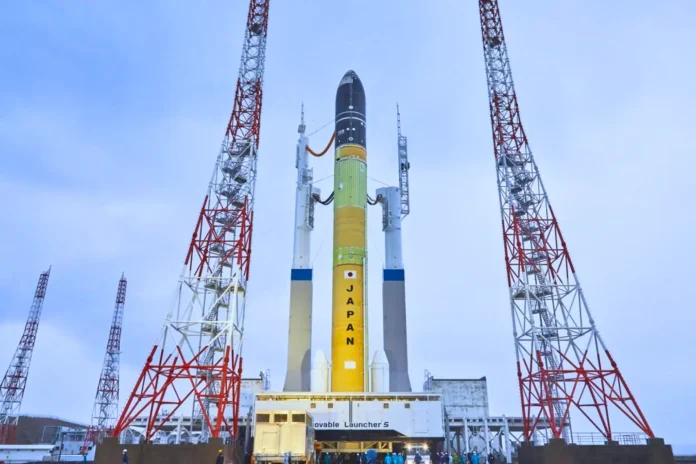After a disappointing debut in 2023, Japan H3 rocket launched back to life on Saturday (17th Feb 2024) morning, achieving its planned route and deploying a satellite in a crucial second test flight. This success marks a milestone for the country’s space program, restoring confidence and hope for its future in global space adventures.
Success of Japan H3 Rocket Launch
The H3 lifted off from the Tanegashima Space Center on Saturday morning, two days after a weather delay. Its initial flight was flawless, and according to the Japan Aerospace Exploration Agency (JAXA), it successfully released the first of two small observation satellites. The agency is expected to provide more details in the coming days while officials are still confirming the status of the second satellite.
H3 is a Successor Under Pressure
This successful launch comes after the H3’s troubled debut last year, where the rocket and its payload, the ALOS-3 observation satellite, were destroyed. Carrying the heavy burden of expectations, the H3 project team faced enormous pressure to get it right this time. The H3 second rocket even received thousands of encouraging messages from supporters nationwide, reflecting the collective hope depending on its launch.
Emotions ran high as the rocket achieved a high route. As the H3 rose through the sky and reached its designated path, joy and relief erupted at the JAXA command center. Livestream footage captured project members cheering and embracing while NHK television reported staff at the press center crying with happiness. This emotional response showcases the significance of this success, coming after a year of setbacks and hard work.
Second Chance with Mock Satellite
While this launch carried a mockup of the ALOS satellite, called VEP-4, it wasn’t designed for deployment. The primary and foremost objective of the test flight was to achieve the intended trajectory, which the H3 accomplished quickly and flawlessly. Additionally, the plan involved placing two observation microsatellites into orbit, with confirmation on their status still pending.
Boost for Japan’s Space Program
After the successful outcome of Japan’s Moon Lander mission, another successful test flight created a significant turning point for Japan’s space program. The country has been trying hard to maintain its competitiveness in the global space race, and the H3’s failure last year cast doubts on its future. However, this recent achievement has rekindled hope and refreshed Japan’s ambitions.
Cost-Effectiveness of H3
The H3 is designed to carry heavier payloads than its predecessor, the H-2A, at significantly lower costs. This cost-effectiveness is crucial for Japan to compete effectively in the global space launch market.
Japan’s Recent Successes
This success follows a string of recent achievements for JAXA. Last month, the agency made a historic precision moon landing with a spacecraft launched by the H-2A rocket. The 48th H-2A launch also successfully placed a spy satellite into its intended orbit. These accomplishments and the H3’s successful test flight paint a promising picture for Japan’s space program.
Related: Japan Moon Landing Achieves Moon Touchdown
While the Japan H3 Rocket launch’s test flight marks a significant step toward the future, further work and testing are needed before the H3 can become fully operational. However, Saturday’s success has instilled renewed confidence in the project and has built a solid foundation for Japan’s future space adventure. With continued dedication and innovation, the H3 has the potential to propel Japan to new heights in the global space field.



